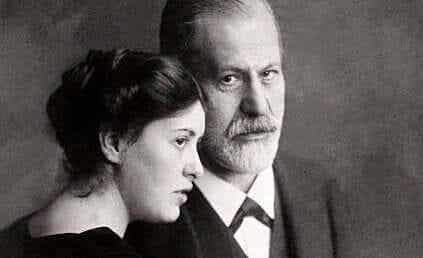Becoming masters of our emotions is not always easy, but we can help ourselves with some control techniques.

Written and verified by the psychologist GetPersonalGrowth.
Last update: 15 November 2021
Some techniques for controlling emotions can change our life. Learn to make better decisions, have good strategies to deal with everyday problems, improve relationships with others, understand why we feel certain emotions. There are numerous areas that can take advantage of this important but neglected ability.
As psychologist Daniel Goleman said, it does not matter how intelligent a person may be if he is not aware of his emotional universe. Those who cannot control anger, those who lack empathy or those who are unable to express themselves fully or assertively will not go very far. And there are many people who move with this gap, with this unresolved dimension.
Let me be clear: it is always a good time to initiate a change in this direction. Each of us has sufficient resources, potential and skills to awaken this ability. Being captain of our emotions will not ensure success or perfect and lasting happiness. He will offer us, however, more self-control and the ability to better understand those around us, in summary a better life.
Techniques for controlling emotions: which are the most effective?
A mistake we often make in the emotional field is the tendency to repress rather than regulate. This is essentially due to our poor emotional education. From an early age we hear people say “don't cry, don't show yourself weak”, “are you worried about such nonsense?”, “If you are angry, grit your teeth”.
Almost without realizing it, they instilled in us the idea that "negative" emotions must be hidden from others. Sadness, anger, disappointment, frustration, all are swallowed up in the inner well of hidden emotions. And what hides itself and allows itself to stagnate ends up becoming toxic. Hence the anxiety, depression and suffering for too long ignored that defines a large part of us.
Understanding, mastering and applying an effective emotion control technique will be of great help. Let's see the main strategies.
1. Technique of stopping thinking
The thought arrest technique aims to control the cycle of ruminant and negative thoughts. It was introduced by psychiatrist Joseph Wolpe in the 50s with the aim of offering patients a strategy for treating obsessive and phobic thoughts.
It is a very simple cognitive resource; it allows you to achieve adequate control over the flow of those exhausting ideas that increase malaise, stress and anxiety.
How is this technique applied?
- When you find that the mind is "assaulted" by negative and obsessive thoughts, take a deep breath and relax. Visualize yourself making a stop sign. Thoughts must be blocked.
- Capture the ideas that arise in the mind without repressing them. Understand the emotion that accompanies the thought and let it go, like a leaf carried away by the current of the river.
- Time replace the negative thought with a positive one, a phrase that is able to reaffirm your self-esteem.
2. Emotional volume control technique
Think about the last time you got angry or felt badly badly. When we live these experiences, different sensations are added up in the mind that make us nervous, thoughts that scream in our heads, emotions that pile up.
In these cases, our inner self has a very high emotional volume: these decibels prevent us from listening to our real needs!
How is this technique applied?
When you feel that emotions are holding you captive and you are at the limit, you have to stop. Take an hour of rest and connection with yourself, in all calm.
- Imagine your mind as a badly tuned radio in which you hear two broadcasters together and you can't understand what they are saying.
- The volume is too loud, sadness screams and overlaps with anger ... It is necessary to lower the intensity a little but - be careful - it is not a question of turning off these voices. What they want to say must be heard more clearly.
- Now that you've turned the volume down, it's time to distinguish each voice (or emotion) and understand what it's telling you. "I'm sad because ..." "I'm angry because ..."
3. Emotional logical reasoning
As they sometimes say, there is a lot of logic in emotions and a lot of emotion in logic. We often allow ourselves to be kidnapped by our emotional universe and stop acting, to think and decide rationally.
This leads us to make bad decisions, to argue about everything and nothing, to regret most of our actions.
How is this technique applied?
- Analyze the thoughts that come to your mind -> better not even start this project because it is destined to fail. I am not good at these things.
- Identify the emotion behind this thought -> fear, insecurity, frustration, anguish.
- Rationalize -> What is true in this statement? Why would I be a failure, have I been successful in the past? Do I need to tell myself that I am not brought up for something that would give me joy to realize instead? If I don't try, I'll never know.
4. Mirror technique for the control of emotions
One of the most interesting techniques for controlling emotions is that of the mirror. It is useful in times when it seems like everything is getting out of hand or when we feel that our self-esteem has been hurt.
This exercise helps us start over, to be aware of our emotions. We will gain strength from the gesture of looking at each other, connecting to our inner and outer self.
How is this technique applied?
First, allow yourself an hour of rest and solitude. Go to a quiet, intimate place, such as the bedroom. For this exercise you will need a mirror large enough to see yourself fully reflected.
- Sit in front of the mirror and focus on your eyes. Now mentally ask yourself "how do I feel?".
- It is normal for emotions to surface at a question of this type. If you feel like crying, let it happen freely. Take your time.
- When you have vented, look at each other again, but with affection. Get in touch with yourself, with compassion, tenderness, approval. Tell yourself that everything will be fine, that new decisions need to be made, take care of new life perspectives and make the necessary changes to feel better.
There are several techniques for emotional control, we advise you to start with the simplest. They are a relief valve and easy to perform. Applied with commitment, they can offer profound well-being.


























